 W
WThis is a list of major perpetrators of the Holocaust.
 W
WArno Kalervo Anthoni was a Finnish lawyer who was the director of the Finnish State Police Valpo in 1941–1944. He was openly antisemite and pro-Nazi, having close relations to the German Sicherheitspolizei. Anthoni and the Minister of Interior Toivo Horelli were responsible for the deportation of 135 German refugees, including 12 Jews, Finland handed over to the Nazis in 1941–1943.
 W
WHerbert Friedrich Wilhelm Backe was a German politician and SS functionary during the Nazi era. He was a doctrinaire racial ideologue, a long-time associate of Richard Walther Darré and a personal friend of Reinhard Heydrich. He developed and implemented the Hunger Plan that envisioned death by starvation of millions of Slavic and Jewish "useless eaters" following Operation Barbarossa, the 1941 invasion of the Soviet Union.
 W
WGottlob Christian Berger was a senior German Nazi official who held the rank of SS-Obergruppenführer und General der Waffen-SS and was the chief of the SS Main Office responsible for Schutzstaffel (SS) recruiting during World War II. After the war, he was convicted as a war criminal and spent six and a half years in prison. While serving in the German Army during World War I, he was wounded four times and awarded the Iron Cross First Class. Immediately after the war, he was a leader of the Einwohnerwehr militia in his native North Württemberg. He joined the Nazi Party in 1922 but lost interest in right-wing politics during the 1920s, training and working as a physical education teacher.
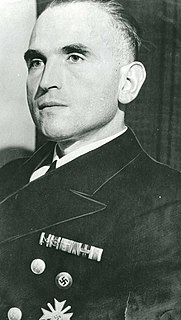 W
WKarl Rudolf Werner Best was a German Nazi, jurist, police chief, SS-Obergruppenführer and Nazi Party leader and theoretician from Darmstadt, Hesse. He was the first chief of Department 1 of the Gestapo, Nazi Germany's secret police, and initiated a registry of all Jews in Germany. As a deputy of SS-Obergruppenführer Reinhard Heydrich, he organized the World War II SS-Einsatzgruppen paramilitary death squads that were responsible for mass killings.
 W
WMartin Ludwig Bormann was a German Nazi Party official and head of the Nazi Party Chancellery. He gained immense power by using his position as Adolf Hitler's private secretary to control the flow of information and access to Hitler. After Hitler's suicide on 30 April 1945, he was Party Minister of the National Socialist German Workers' Party.
 W
WHeinrich Bütefisch was a German chemist, manager at IG Farben, and Nazi war criminal. He was an Obersturmbannführer in the SS.
 W
WTheodor Eicke was a German SS functionary during the Nazi era. He was one of the key figures in the development of Nazi concentration camps during the Holocaust.
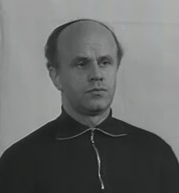 W
WAugust Franz Frank was a German SS functionary in the SS Main Economic and Administrative Office, generally known by its German initials WVHA. The WVHA was, among other things, responsible for the administration of the Nazi concentration camps. After the war, the higher WVHA officials, including Frank, were tried and convicted of crimes against humanity.
 W
WHans Michael Frank was a German politician and lawyer who served as head of the General Government in Poland during the Second World War.
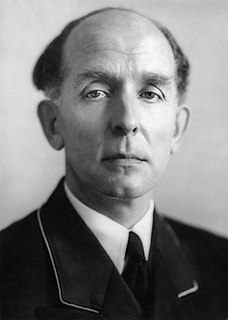 W
WRoland Freisler was a German Nazi jurist, judge, and politician who served as the State Secretary of the Reich Ministry of Justice from 1934 to 1942 and President of the People's Court from 1942 to 1945.
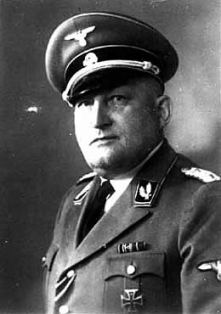 W
WRichard Glücks (help·info) was a high-ranking German Nazi official in the SS. From November 1939 until the end of World War II, he was Concentration Camps Inspector (CCI), which became Amt D: Konzentrationslagerwesen under the WVHA in Nazi Germany. As a direct subordinate of Heinrich Himmler, he was responsible for the forced labour of the camp inmates, and was also the supervisor for the medical practices in the camps, ranging from human experimentation to the implementation of the "Final Solution", in particular the mass murder of inmates with Zyklon-B gas. After Germany capitulated, Glücks committed suicide by swallowing a potassium cyanide capsule.
 W
WPaul Joseph Goebbels (German: [ˈpaʊ̯l ˈjoːzɛf ˈɡœbl̩s] ; was a German Nazi politician and Reich Minister of Propaganda of Nazi Germany from 1933 to 1945. He was one of Adolf Hitler's closest and most devoted associates, and was known for his skills in public speaking and his deeply virulent antisemitism, which was evident in his publicly voiced views. He advocated progressively harsher discrimination, including the extermination of the Jews in the Holocaust.
 W
WHermann Wilhelm Göring was a German political and military leader and a convicted war criminal. Göring was one of the most powerful figures in the Nazi Party, which ruled Germany from 1933 to 1945.
 W
WUlrich Heinrich Emil Richard Greifelt was a German SS functionary and war criminal during the Nazi era. He was convicted at the RuSHA trial at Nuremberg, sentenced to life imprisonment, and died in Landsberg Prison.
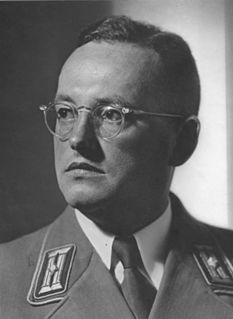 W
WDr. Walter Gross was a German physician appointed to create the Office for Enlightenment on Population Policy and Racial Welfare for the Nazi party (NSDAP). He headed this office, renamed the Office of Racial Policy in 1934, until his suicide at the close of World War II.
 W
WFranz Gürtner was a German Minister of Justice in Adolf Hitler's cabinet, responsible for coordinating jurisprudence in the Third Reich. He provided official sanction and legal grounds for a series of actions under the governments of Franz von Papen, Kurt von Schleicher and Hitler from 1932 until his death in 1941.
 W
WKarl August Hanke was an official of the Nazi Party (NSDAP) during its rule over Germany and served as the fifth and last Reichsführer of the Schutzstaffel (SS). He also served as Gauleiter of Gau Lower Silesia from 1941 to 1945 and as Oberpräsident of the Prussian Province of Lower Silesia. Captured on 6 May 1945, he was shot and killed by Czech partisans on 8 June.
 W
WAlbert Hartl (1904–1982) was a former Catholic priest in Germany who joined the National Socialist German Workers' Party in 1933 and the Sicherheitsdienst the following year.
 W
WAugust Heißmeyer, was a German SS functionary during the Nazi era. He commanded the SS Main Office in 1935–1939. After World War II, Heißmeyer was tried and convicted as a "major Nazi offender".
 W
WReinhard Tristan Eugen Heydrich was a high-ranking German SS and police official during the Nazi era and a main architect of the Holocaust. He was chief of the Reich Main Security Office. He was also Stellvertretender Reichsprotektor of Bohemia and Moravia. He served as president of the International Criminal Police Commission and chaired the January 1942 Wannsee Conference which formalised plans for the "Final Solution to the Jewish Question"—the deportation and genocide of all Jews in German-occupied Europe.
 W
WHeinrich Luitpold Himmler was Reichsführer of the Schutzstaffel, and a leading member of the Nazi Party (NSDAP) of Germany. Himmler was one of the most powerful men in Nazi Germany and a main architect of the Holocaust.
 W
WHans Hinkel was a German journalist and ministerial official in Nazi Germany. He studied at the University of Bonn, where he was a member of the academic fencing fraternity Sugambria. Hinkel had served in the Freikorps and joined the NSDAP in 1921. From 1930 to 1932 he was the editor of the Völkischer Beobachter in Berlin. After the Nazis seized power in 1933, he became Reich Organization Leader of the Militant League for German Culture and manager of the Reich Culture Chamber (Reichskulturkammer).
 W
WAugust Hirt was an anatomist with Swiss and German nationality who served as a chairman at the Reich University in Strasbourg during World War II. He performed experiments with mustard gas on inmates at the Natzweiler-Struthof concentration camp and played a lead role in the murders of 86 people at Natzweiler-Struthof for the Jewish skeleton collection. The skeletons of his victims were meant to become specimens at the Institute of anatomy in Strasbourg, but completion of the project was stopped by the progress of the war. He was an SS-Hauptsturmführer (captain) and in 1944, an SS-Sturmbannführer (major).
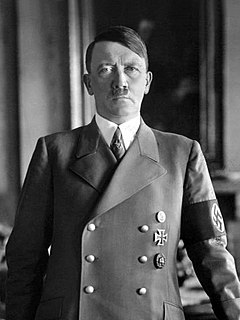 W
WAdolf Hitler was a German politician and leader of the Nazi Party. He rose to power as the chancellor of Germany in 1933 and then as Führer in 1934. During his dictatorship from 1933 to 1945, he initiated World War II in Europe by invading Poland on 1 September 1939. He was closely involved in military operations throughout the war and was central to the perpetration of the Holocaust.
 W
WOtto Hofmann was a German SS functionary during the Nazi era. He was the head of the SS Race and Settlement Main Office. Sentenced to 25 years in prison at the RuSHA Trial in 1948, Hofmann was released on 7 April 1954.
 W
WKarl Holz was a German Nazi Party politician. He was Gauleiter of Gau Franconia and rose to the rank of Gruppenführer in the Sturmabteilung (SA).
 W
WToivo Johannes Horelli was a Finnish politician of the National Coalition Party. He was a member of the Parliament of Finland in 1933–1945, and the Minister of the Interior from May 1941 to March 1943.
 W
WAlfred Josef Ferdinand Jodl was a German Generaloberst who served as the Chief of the Operations Staff of the Oberkommando der Wehrmacht, the German Armed Forces High Command, throughout World War II.
 W
WEva Justin was a German anthropologist who was active during the Nazi era. She specialised in scientific racism. Her work contributed to the Nazi crimes against the Sinti and Roma peoples.
 W
WErnst Kaltenbrunner was a high-ranking Austrian SS official during the Nazi era and a major perpetrator of the Holocaust. He was Chief of the Reich Main Security Office from January 1943 until the end of World War II in Europe.
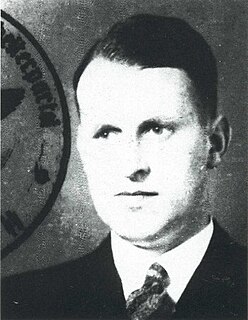 W
WHans Kammler was a German civil engineer and SS-Obergruppenführer during the Nazi era. He oversaw SS construction projects including various nazi concentration camps and towards the end of World War II was put in charge of the V-2 missile and jet programmes. The historian Mark Felton claims that Kammler almost certainly survived World War II although his life following the war remains a mystery.
 W
WGerhard Klopfer was a senior official of the Nazi Party and assistant to Martin Bormann in the Office of the (Nazi) Party Chancellery.
Alfried Felix Alwyn Krupp von Bohlen und Halbach, often referred to as Alfried Krupp, was an industrialist, a competitor in Olympic yacht races and a member of the Krupp family, which has been prominent in German industry since the early 19th century. He was convicted after World War II of crimes against humanity for the genocidal manner in which he operated his factories; served three years in prison, and was pardoned, but not acquitted.
 W
WMartin Franz Julius Luther was an early member of the Nazi Party. He served as an advisor to Foreign Minister Joachim von Ribbentrop, first in the Dienststelle Ribbentrop, and later in the Auswärtiges Amt as a diplomat when von Ribbentrop replaced Konstantin von Neurath. He participated in the Wannsee Conference, at which the Final Solution was planned; it was the 1947 discovery of his copy of the minutes that first made the Allied powers aware that the conference had taken place and what its purpose was.
 W
WGustav Alfred Julius Meyer was a Nazi official. He joined the Nazi party in 1928 and was the Gauleiter of North Westphalia from 1931 to 1945, the Oberpräsident of the Province of Westphalia from 1938 to 1945 and the Reichsstatthalter of Lippe and Schaumburg-Lippe from 1933 to 1945.
 W
WHeinrich Müller was a high-ranking German Schutzstaffel (SS) and police official during the Nazi era. For the majority of World War II in Europe, he was the chief of the Gestapo, the secret state police of Nazi Germany. Müller was central in the planning and execution of the Holocaust and attended the January 1942 Wannsee Conference, which formalised plans for deportation and genocide of all Jews in German-occupied Europe—The "Final Solution to the Jewish Question". He was known as "Gestapo Müller" to distinguish him from another SS general named Heinrich Müller.
 W
WArthur Nebe (help·info) was a key functionary in the security and police apparatus of Nazi Germany and a Holocaust perpetrator.
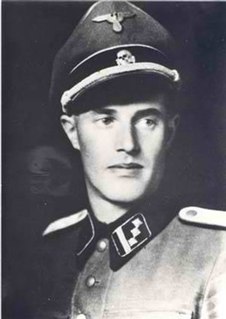 W
WFranz Novak was an Austrian SS-Hauptsturmführer. Novak was Adolf Eichmann's railroad and transportation timetable expert; he coordinated the railroad deportation of European Jews to concentration and extermination camps.
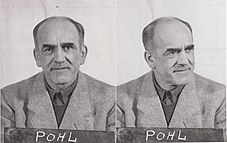 W
WOswald Ludwig Pohl listen was a German SS functionary during the Nazi era. As the head of the SS Main Economic and Administrative Office and the head administrator of the Nazi concentration camps, he was a key figure in the Final Solution, the genocide of the European Jews.
 W
WEmil Johann Rudolf Puhl was a Nazi economist and banking official during World War II.
 W
WFriedrich Wilhelm Rediess was the SS and Police Leader during the German occupation of Norway in the Second World War. He was also the commander of all SS troops stationed in occupied Norway, assuming command on 22 June 1940 until his death in 1945.
 W
WFriedrich Rudolph (Fritz) Reinhardt was an official in the Nazi Party (NSDAP) and in the government of the Third Reich, most notably, State Secretary in the German Finance Ministry.
 W
WUlrich Friedrich Wilhelm Joachim von Ribbentrop was minister of foreign affairs of Nazi Germany from 1938 to 1945.
 W
WAlfred Ernst Rosenberg was a Baltic German Nazi theorist and ideologue. Rosenberg was first introduced to Adolf Hitler by Dietrich Eckart and held several important posts in the Nazi government. He was the head of the NSDAP Office of Foreign Affairs during the entire rule of Nazi Germany (1933–1945), and led Amt Rosenberg, an official Nazi body for cultural policy and surveillance, between 1934 and 1945. During World War II, Rosenberg was the head of the Reich Ministry for the Occupied Eastern Territories (1941–1945). After the war, he was convicted of crimes against peace; planning, initiating and waging wars of aggression; war crimes; and crimes against humanity at the Nuremberg trials in 1946. He was sentenced to death and executed on 16 October 1946.
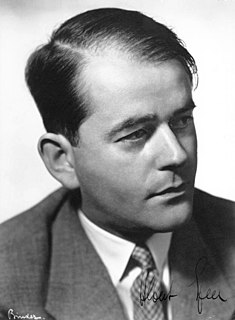 W
WAlbert Speer served as the Minister of Armaments and War Production in Nazi Germany during most of World War II. A close ally of Adolf Hitler, he was convicted at the Nuremberg trials and sentenced to 20 years in prison.
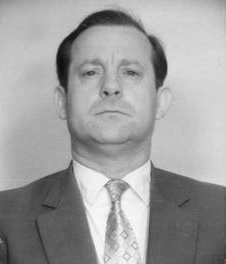 W
WHans Stark was an SS-Untersturmführer and head of the admissions detail at Auschwitz-II Birkenau of Auschwitz concentration camp.
 W
WBruno Emil Tesch was a German chemist and entrepreneur. Together with Gerhard Peters and Walter Heerdt, he invented the insecticide Zyklon B. He was the owner of Tesch & Stabenow, a pest control company he co-founded in 1924 with Paul Stabenow in Hamburg, Germany.
 W
WPer Asbjørn Pedersen Tjøstland, né Per Asbjørn Pedersen, was a Norwegian Nazi activist and SS volunteer. As editor of the Norwegian SS newspaper Germaneren, he belonged to the radical and anti-capitalist wing of Nazism, and was a proponent of "a total revolution" and racial war.
 W
WFritz Todt was a German construction engineer and senior Nazi, who rose from the position of "Inspector General for German Roadways", where he directed the construction of the German Autobahns (Reichsautobahnen), to become the Reich Minister for Armaments and Ammunition. From that position he directed the entire German wartime military economy. At the beginning of World War II he initiated what Hitler named Organisation Todt, a military-engineering company, which supplied industry with forced labor and administered construction of the Nazi concentration camps in the late phase of Nazi Germany. Todt died in a mysterious aircraft crash in 1942.